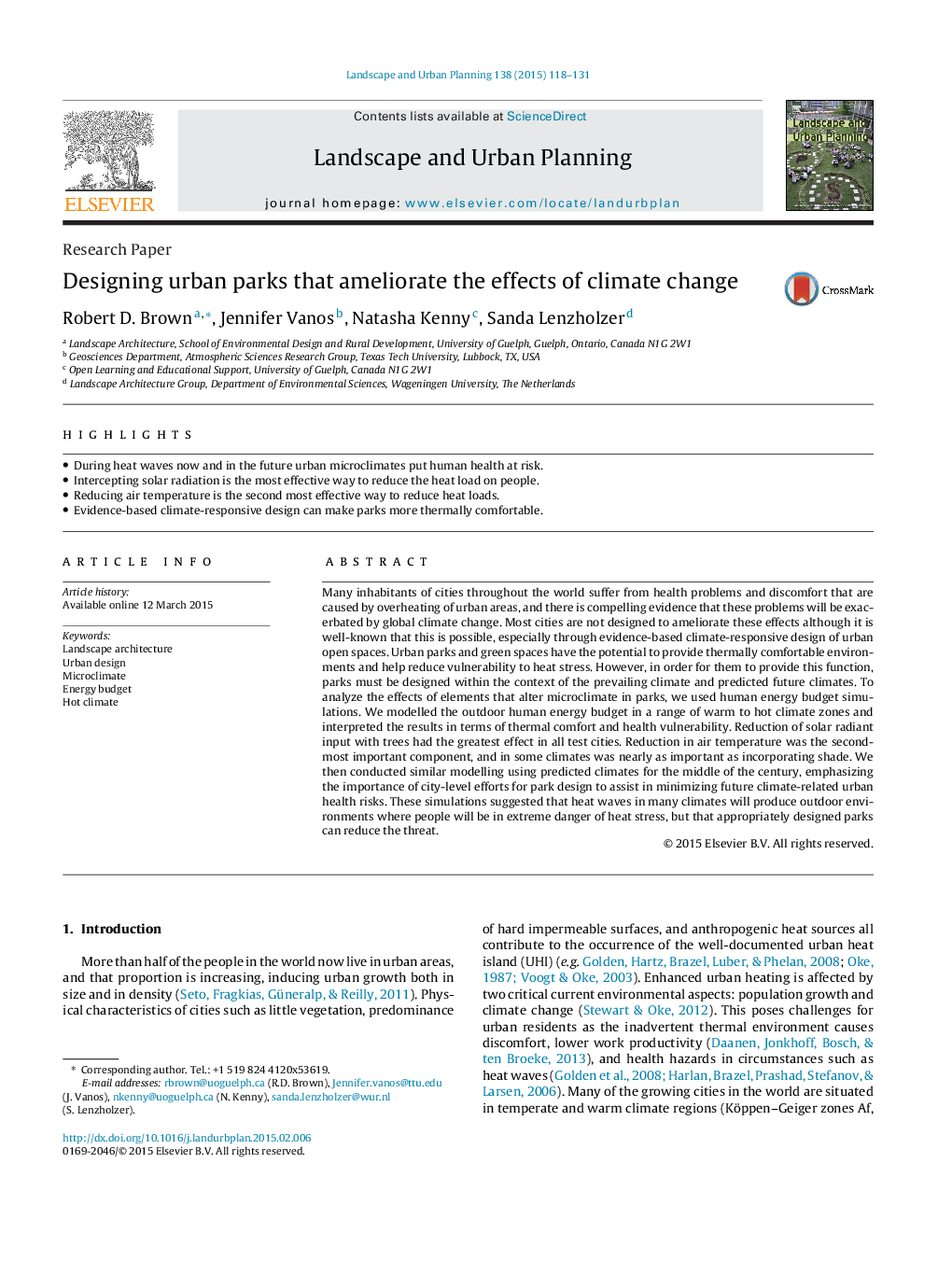| کد مقاله | کد نشریه | سال انتشار | مقاله انگلیسی | نسخه تمام متن |
|---|---|---|---|---|
| 1049125 | 1484620 | 2015 | 14 صفحه PDF | دانلود رایگان |
• During heat waves now and in the future urban microclimates put human health at risk.
• Intercepting solar radiation is the most effective way to reduce the heat load on people.
• Reducing air temperature is the second most effective way to reduce heat loads.
• Evidence-based climate-responsive design can make parks more thermally comfortable.
Many inhabitants of cities throughout the world suffer from health problems and discomfort that are caused by overheating of urban areas, and there is compelling evidence that these problems will be exacerbated by global climate change. Most cities are not designed to ameliorate these effects although it is well-known that this is possible, especially through evidence-based climate-responsive design of urban open spaces. Urban parks and green spaces have the potential to provide thermally comfortable environments and help reduce vulnerability to heat stress. However, in order for them to provide this function, parks must be designed within the context of the prevailing climate and predicted future climates. To analyze the effects of elements that alter microclimate in parks, we used human energy budget simulations. We modelled the outdoor human energy budget in a range of warm to hot climate zones and interpreted the results in terms of thermal comfort and health vulnerability. Reduction of solar radiant input with trees had the greatest effect in all test cities. Reduction in air temperature was the second-most important component, and in some climates was nearly as important as incorporating shade. We then conducted similar modelling using predicted climates for the middle of the century, emphasizing the importance of city-level efforts for park design to assist in minimizing future climate-related urban health risks. These simulations suggested that heat waves in many climates will produce outdoor environments where people will be in extreme danger of heat stress, but that appropriately designed parks can reduce the threat.
Journal: Landscape and Urban Planning - Volume 138, June 2015, Pages 118–131
